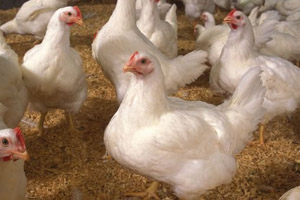Effect of a reducing agent in broiler all-sorghum diets

ABSTRACT: Researchers at the University of Sydney, Australia did a preliminary assessment that was designed to determine appropriate inclusion levels of the reducing agent, sodium metabisulphite (SMBS), in ‘all-sorghum’ broiler diets.
Dietary SMBS inclusion levels of 0, 1.25, 2.5, 5.0, 7.5, 10.0, 12.5 and 15.0gkg−1 were investigated with corresponding reductions (923 to 908gkg−1) in dietary sorghum concentrations.
In vitro evaluations included the determination of concentrations of free sulphydryl groups and disulphide bonds in all-sorghum diets. In vivo parameters included growth performance (14 to 21 days post-hatch), nutrient utilisation and apparent nitrogen (N) digestibility coefficients in four small intestinal sites in broilers at 21 days post-hatch. In addition, the effect of 5.0gkg−1 SMBS on starch digestibility coefficients and sites of starch disappearance along the small intestine were determined.
The reducing agent significantly increased free sulphydryl group and decreased disulphide bond concentrations. SMBS significantly depressed feed intakes at 5.0gkg−1 and at higher inclusion levels and there was a linear reduction in feed intakes (r=-0.783; P<0.001). SMBS had cubic effects on weight gain (r=0.588; P<0.001) and feed conversion ratios (r=0.500; P<0.01). It may be deduced from the relevant regression equations that the optimum SMBS inclusions are 2.47gkg−1 for weight gains and 2.14gkg−1 for feed conversion ratios. SMBS significantly increased apparent metabolisable energy (AME) at inclusions of 1.25, 5.0, 10.0 and 12.5gkg−1. At the lowest inclusion of 1.25gkg−1 SMBS increased AME by 0.39MJ (14.80 versus 14.41MJ/kg; P<0.001) and the most profound response of 0.56MJ (14.97 versus 14.41MJ/kg; P<0.001) was observed at 10.0gkg−1. SMBS linearly increased N retention (r=0.592; P<0.001). In the distal jejunum, SMBS significantly depressed N digestibility coefficients at inclusions of 1.25, 2.5, 10.0, and 15.0gkg−1 and in the distal ileum with SMBS inclusions of 1.25, 10.0 and 15.0gkg−1. SMBS did not influence N digestibility in the proximal jejunum (P>0.60) and proximal ileum (P>0.55). At 5.0gkg−1, SMBS increased starch digestibility coefficients by 3.76% in the proximal ileum (0.966 versus 0.931; P<0.01) and 3.27% in the distal ileum (0.980 versus 0.949; P<0.001). Also, SMBS significantly decreased the quantity of starch disappearance in the proximal jejunum, or abruptly digestible starch, by 16.3% (245.6 versus 293.4g/bird; P<0.01).
It is concluded that birds are able to tolerate dietary inclusions of SMBS approaching 5.0gkg−1 and that SMBS has the capacity to enhance energy utilisation of sorghum-based diets by broiler chickens. Consideration is given to the mechanisms whereby SMBS might enhance energy utilisation.
Source: ScienceDirect











